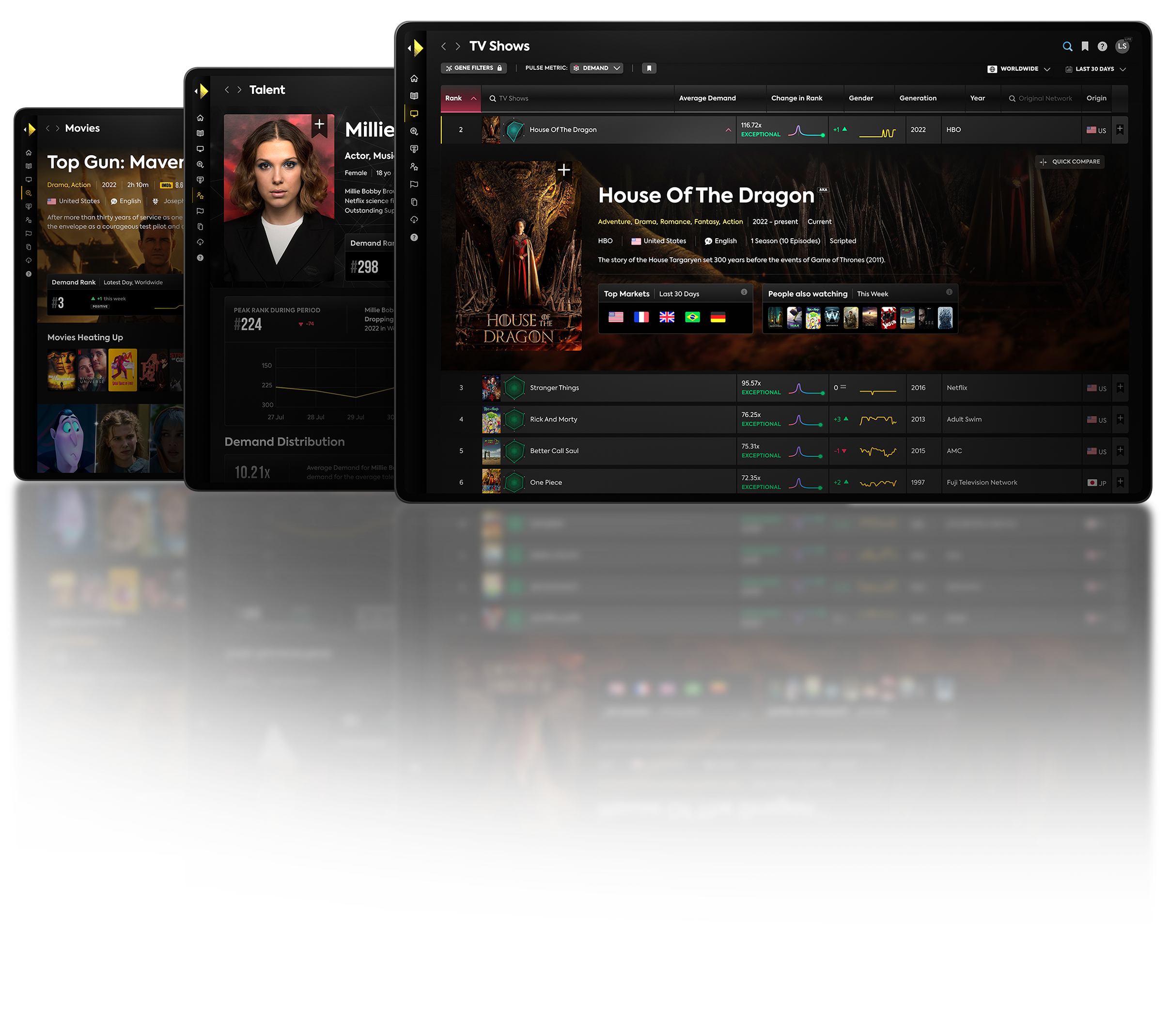In the contemporary content environment, the international appeal of a series is an important consideration. There are plenty of examples of shows originally produced for a single content market that broke out to global success after being distributed to other markets, with La Casa De Papel / Money Heist on Netflix the most prominent recent example.
As a producer of content, how can you unlock that international appeal for your own series without sacrificing the authenticity of the stories you tell? How can you even discover what audiences in distant markets crave in their content?
In September 2020, Filmarket Hub held a Pitchbox event for producers in Latin America. During this event Parrot Analytics’ Director of Applied Analytics, Alejandro Rojas, delivered a keynote talk titled
Frequent Travelers: What makes content travel most?
This talk demonstrated Parrot Analytics’ cutting-edge, data-driven approach to refining pitches for international market appeal. This included walking the attendees through a real data example of the process.
The keynote was well-attended by producers seeking to elevate their concepts. We have summarized the key points discussed in the talk in this article, but you can also watch the recording the presentation below:
Travelability: measuring and mapping how content travels
To increase international success, we first must measure international success! Parrot Analytics’ travelability metric is a ratio between home market demand and another market’s demand. It allows easy comparison of show performance across markets. Overlaid on a map, it clearly shows where content is grabbing audience attention.
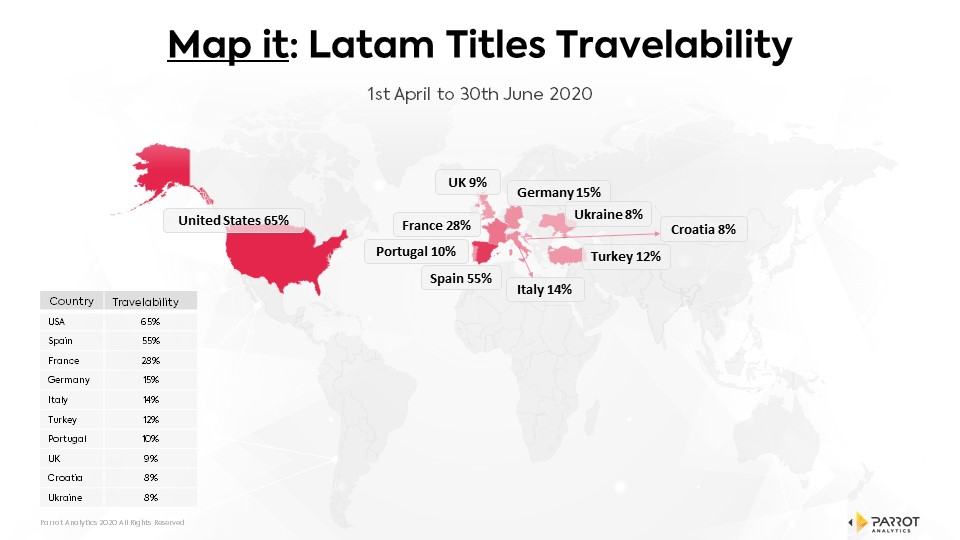
This chart shows where LATAM content currently travels best to outside of the LATAM region itself. Audiences in the USA are most enthusiastic about LATAM series, followed by Spain and other European markets.
Many different types of LATAM series travel well to the USA
Narrowing our scope down to the preferences of audiences in the United States, this chart shows the ten LATAM series that have the highest demand in the USA from January to July 2020.
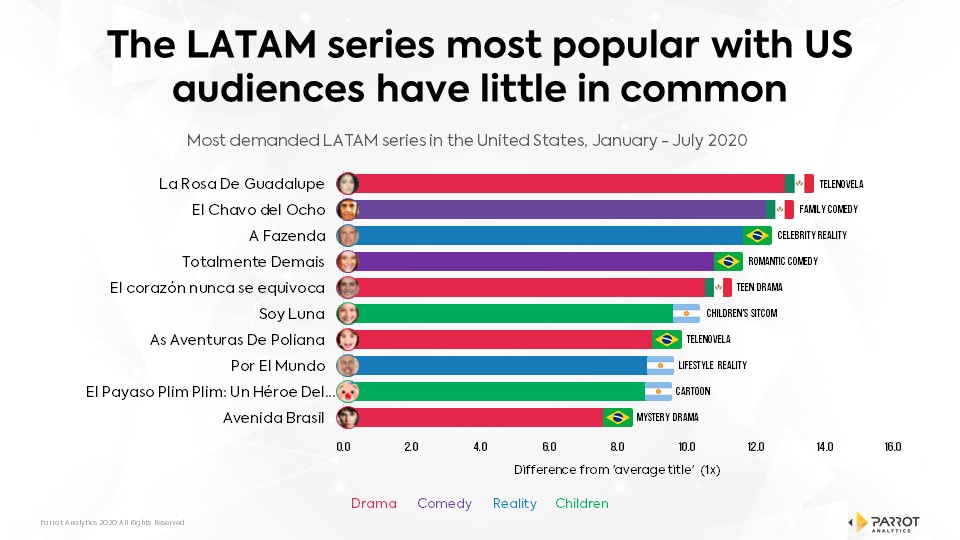
The series have little in common: represented are four different genres, three different origin countries and nine different subgenres! Any type of series could potentially travel well from LATAM to the USA.
Accessibility is an important factor
We have previously talked about how easy accessibility improves the travelability of series. La Casa De Papel / Money Heist is the classic example of a show that performed well in its home market of Spain but exploded in demand internationally after Season 1 was added to Netflix’s global library.
To see if Money Heist was an isolated incident, we analysed how this accessibility effect applied across all series.
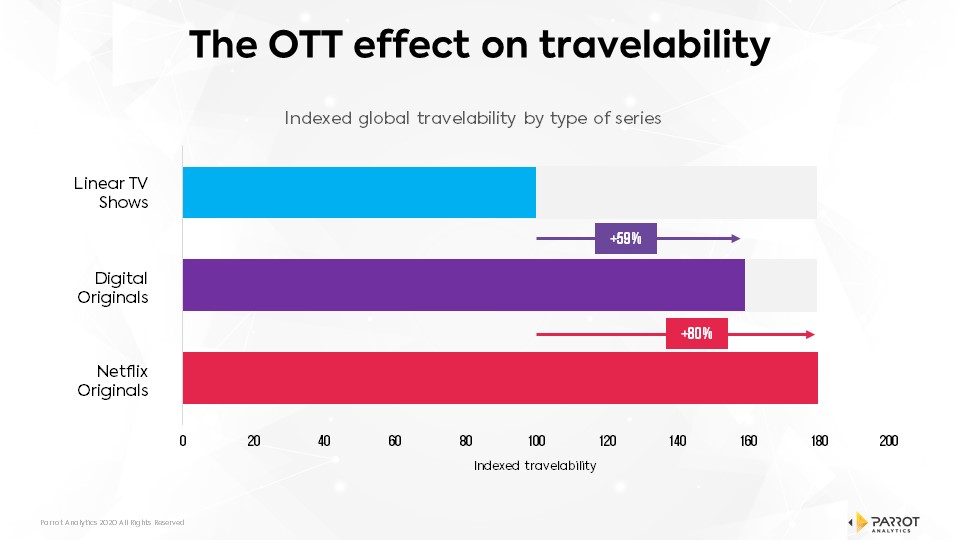
We found that globally, digital original series have around 60% more travelability than linear series. For just Netflix series, this increases to 80% more than linear series, nearly double.
But this raises the question: Do digital originals travel more because of the global distribution, or do OTTs prefer to acquire and/or commission shows meant for global audience tastes?
After all, Netflix is famous for their data-driven approach to content decision-making. With their large subscriber base, they have the consumption habits of tens of millions of subscribers in markets around the world to analyze for trends. Does this mean local producers should simply focus on what works in their home market? What is the secret ingredient to reach global audiences?
Introducing concept testing
We believe Parrot Analytics’ concept testing is the answer to the last question. But what is concept testing?
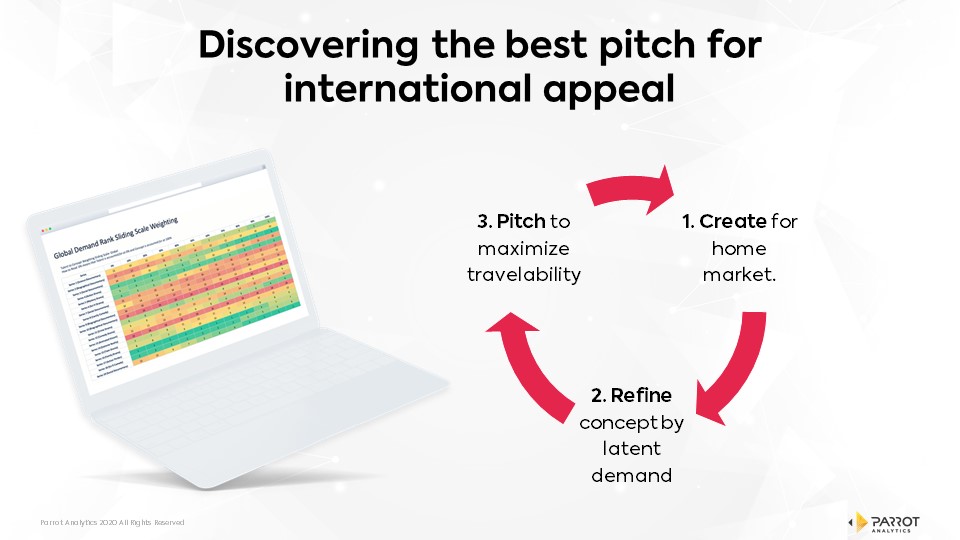
All series have a content genome made up of genes: genre, mood, themes, subjects, characters, setting, country of origin to name a few. Here are some of the genes that make up the genome of the Netflix series Control Z.
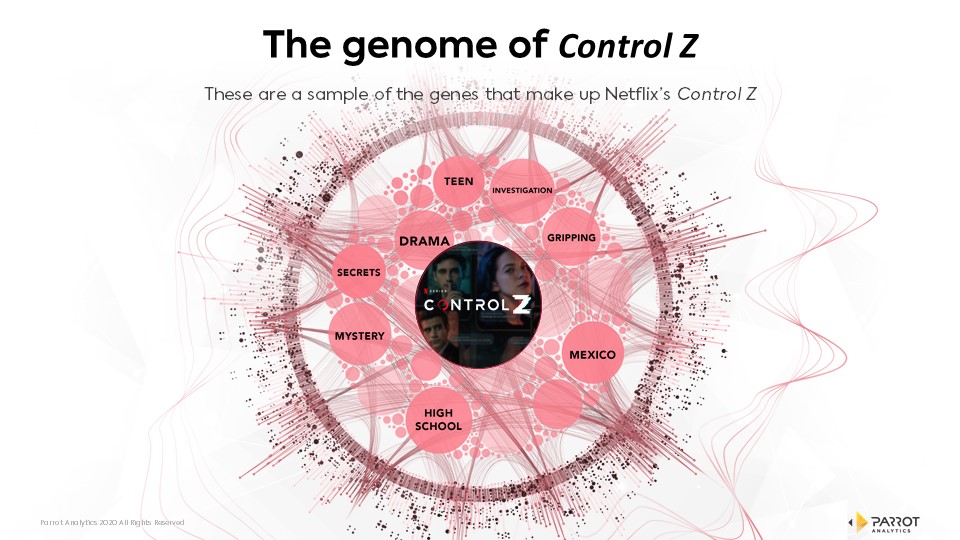
At Parrot Analytics, we have two extensive databases of our own. One of these databases contains the content genome of tens of thousands of titles. The other is the downloading/streaming data of these same titles in nearly one hundred individual markets. When these are combined by a sophisticated machine learning algorithm, it results in the concept testing model.
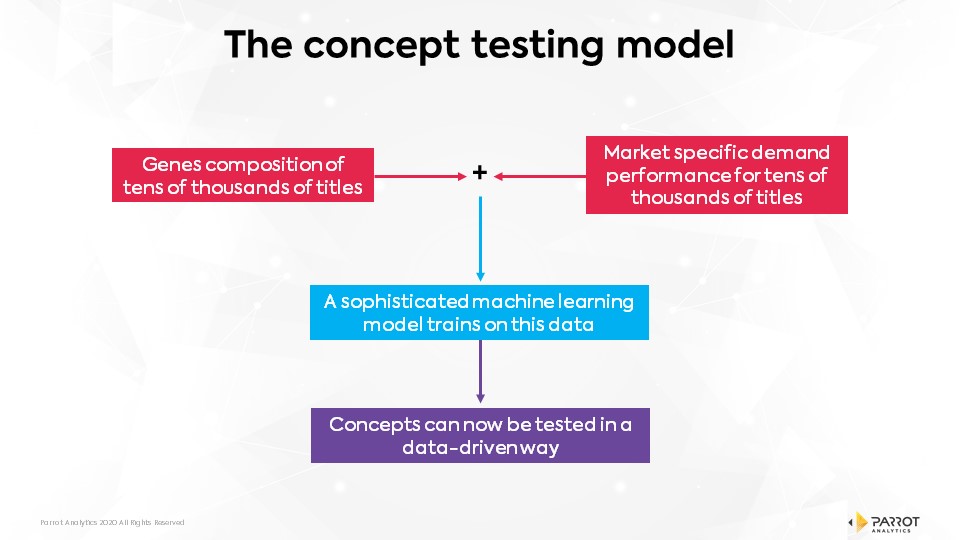
The concept testing model allows producers to refine their show for maximum market appeal before production even starts.
For any given combination of genes, the model reveals what the ‘latent demand’ for that genome is in the desired markets. This latent demand indicates how much audiences in that market will like the potential show.
Testing an example series pitch
Concept testing is best demonstrated using an actual real-data example. Our example is centred around this elevator pitch that we created for a Mexican crime drama:
“Feuding crime organizations in 1950s Mexico City.”
We can break down that pitch into the core genes of our series. We cannot change these genes without making a different show! But we can test other potential genes and see how, if incorporated, they would change the show’s appeal in a market.
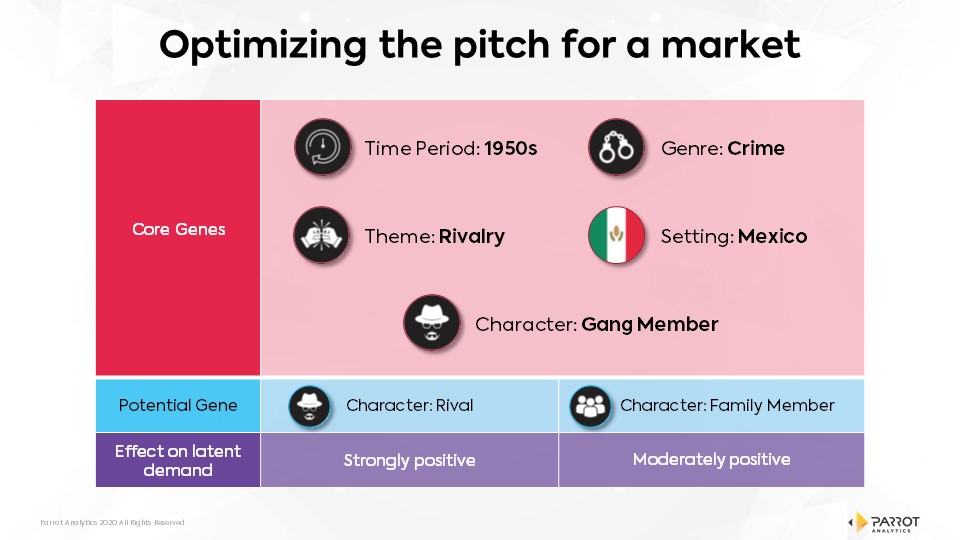
In Mexico, if we add the gene of Character: Rival to the existing genes of our show then this has a strongly positive effect on latent demand. Adding the gene of Character: Family Member also has a positive effect but a smaller, more moderate effect. Both would be appreciated by Mexican audiences, but as series have a limited number of minutes in their seasons it is not always possible to include everything. In this case, with all else being equal the the show will perform better in Mexico if more screen time is spent on the Rival.
Using the concept test to increase potential travelability
This example, our goal will be to be take our Mexican crime drama and improving its potential appeal to audiences in the United States.
Using the process above, we analyse many different potential genes for their effect on latent demand for audiences in both the USA and Mexico. With data across two markets, we can now take what we have learned and refine our pitch to increase its appeal to American audiences.
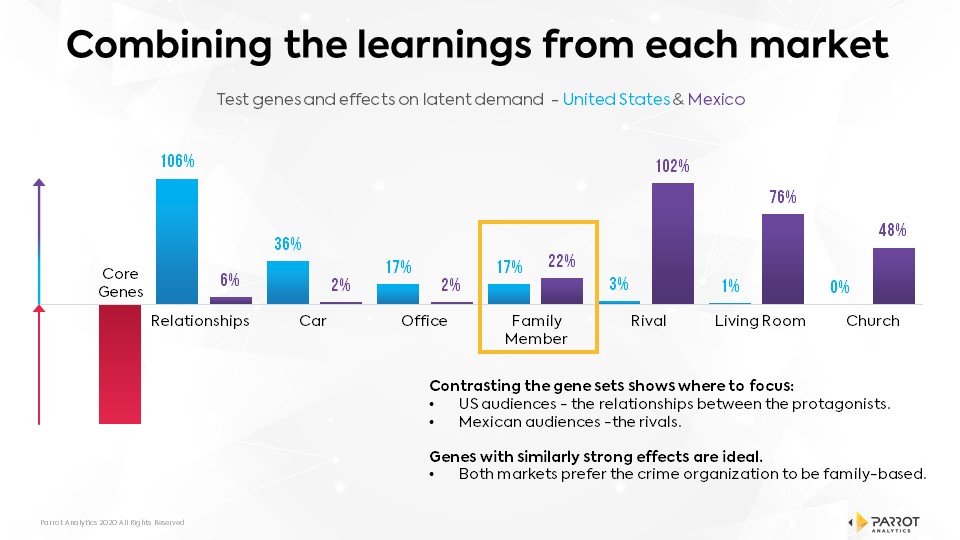
Contrasting the gene influences for both markets shows us where we can make refinements to the concept:
- For US audiences, the relationships between the protagonists strongly increases latent demand.
- For Mexican audiences, giving more prominence to the protagonist’s rivals strongly increases latent demand.
- Both markets prefer the crime organization to be family-based. Genes that have a positive impact in all markets are ideal to incorporate!
With the test complete, we now know how to achieve our goal. We’re still making the same series; the core genes are completely unchanged. However, we now know how to refine the show to give us the best possible appeal in our target international market of the United States, which will lead to high travelability. Although we only used one market for this example, the analysis can be performed on multiple markets or regions.
Testing concept testing: the release of Control Z
Earlier, we looked in detail at some of the genome that makes up Control Z. That series is, of course, not in pre-production. At the time of this presentation, it had already released worldwide on Netflix.
What happens if we compare the latent demand that the concept testing model produces for the Control Z genome to the actual post-release performance of Control Z?
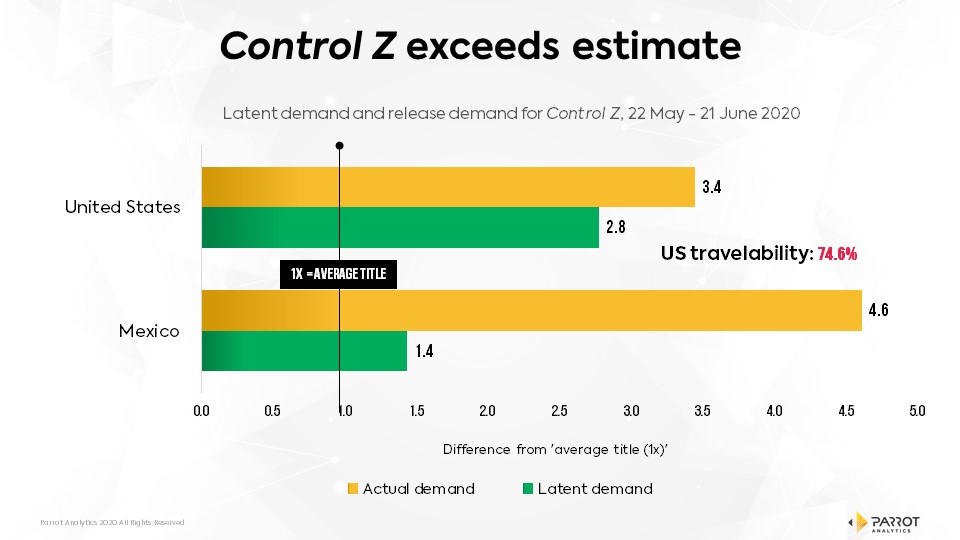
The latent demand in green shows that Control Z should have high travelability to the USA. The show did achieve this, as predicted! Control Z’s travelability to the United States is 74.6%, which is the current record high travelability for a LATAM series.
In both markets, the actual demand for Control Z in yellow is considerably higher than the latent demand in green. Why is this? The simple answer here is that latent demand tests the strength of concepts but for every series, there are many factors beyond the concept that will affect launch demand:
- How much and how effectively was the show marketed in each country?
- What did local reviewers say ahead of the release?
- Were series competing for the same audience attention released at the same time in any of the markets?
- And many more.
Control Z’s strong execution on their concept took it far beyond the ‘typical’ show, leading to results even better than latent demand indicated.



